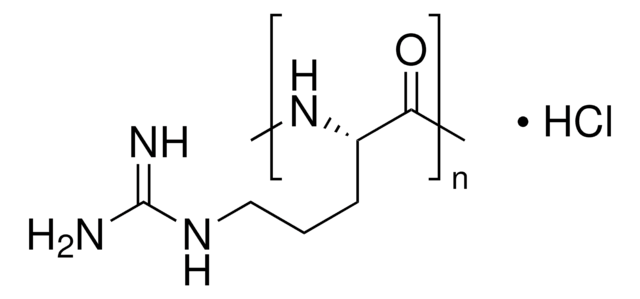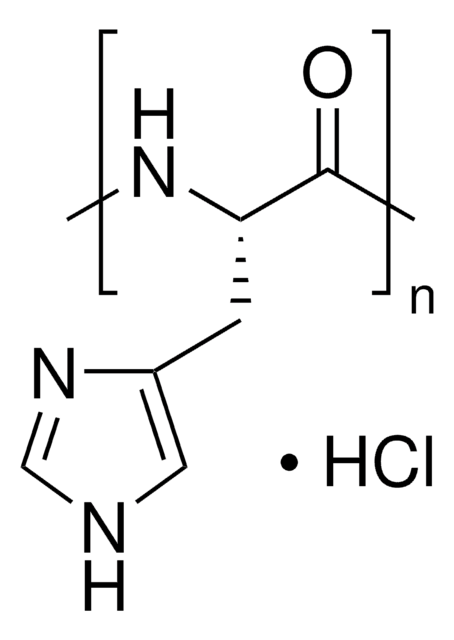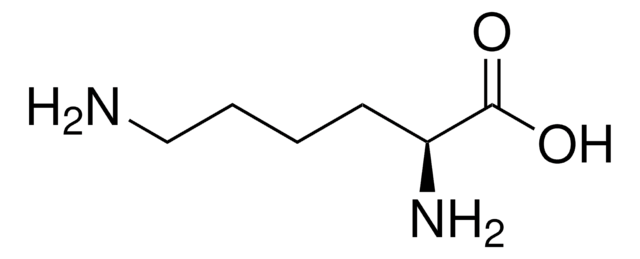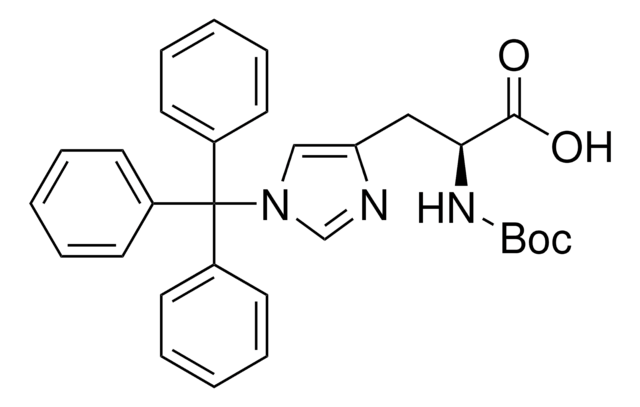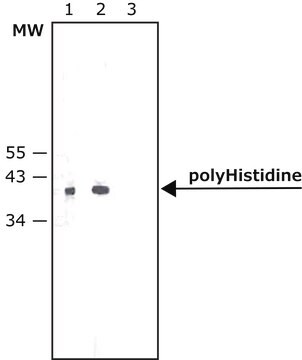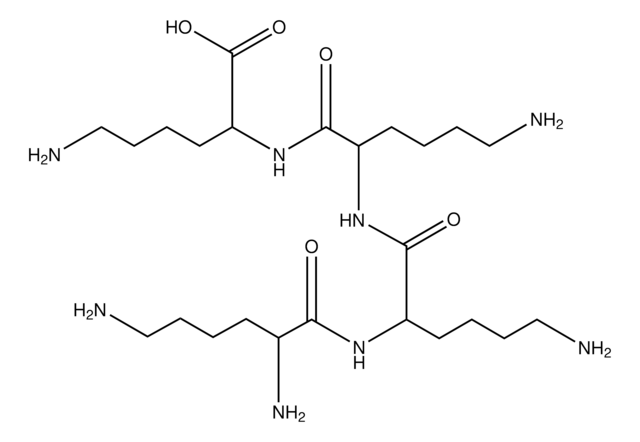P9386
Poly-L-histidine
mol wt 5,000-25,000
Sinonimo/i:
L-Histidine homopolymer
About This Item
Prodotti consigliati
Stato
powder or solid
Livello qualitativo
PM
5,000-25,000
Colore
white to light yellow
applicazioni
cell analysis
Temperatura di conservazione
−20°C
InChI
1S/C6H9N3O2/c7-5(6(10)11)1-4-2-8-3-9-4/h2-3,5H,1,7H2,(H,8,9)(H,10,11)/t5-/m0/s1
HNDVDQJCIGZPNO-YFKPBYRVSA-N
Cerchi prodotti simili? Visita Guida al confronto tra prodotti
Descrizione generale
Applicazioni
- as a polycation for the dispersion of multi-wall carbon nanotubes (MWCNTs)
- as a polyionic compound to investigate its ability to rupture extracellular enveloped virus membrane
- in screening its anti-prion activity in cell based and in vivo anti-prion assay
Azioni biochim/fisiol
Risultati analitici
Altre note
Codice della classe di stoccaggio
11 - Combustible Solids
Classe di pericolosità dell'acqua (WGK)
WGK 3
Punto d’infiammabilità (°F)
Not applicable
Punto d’infiammabilità (°C)
Not applicable
Dispositivi di protezione individuale
Eyeshields, Gloves, type N95 (US)
Scegli una delle versioni più recenti:
Possiedi già questo prodotto?
I documenti relativi ai prodotti acquistati recentemente sono disponibili nell’Archivio dei documenti.
I clienti hanno visto anche
Articoli
Humankind has utilized protein materials throughout its existence, starting with the use of materials such as wool and silk for warmth and protection from the elements and continuing with the use of recombinant DNA techniques to synthesize proteins with unique and useful properties.
Il team dei nostri ricercatori vanta grande esperienza in tutte le aree della ricerca quali Life Science, scienza dei materiali, sintesi chimica, cromatografia, discipline analitiche, ecc..
Contatta l'Assistenza Tecnica.